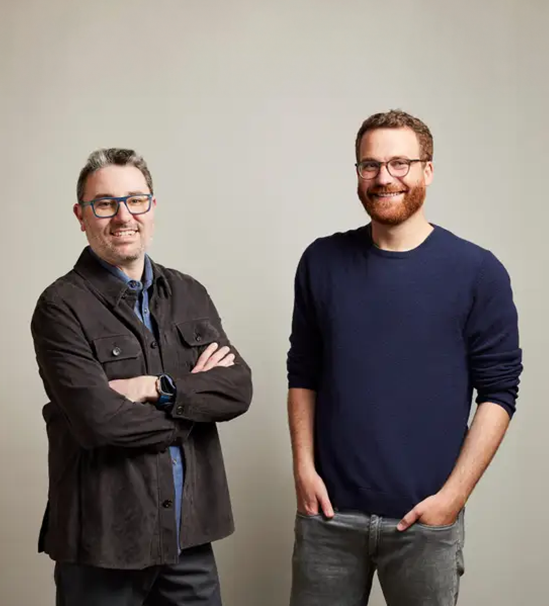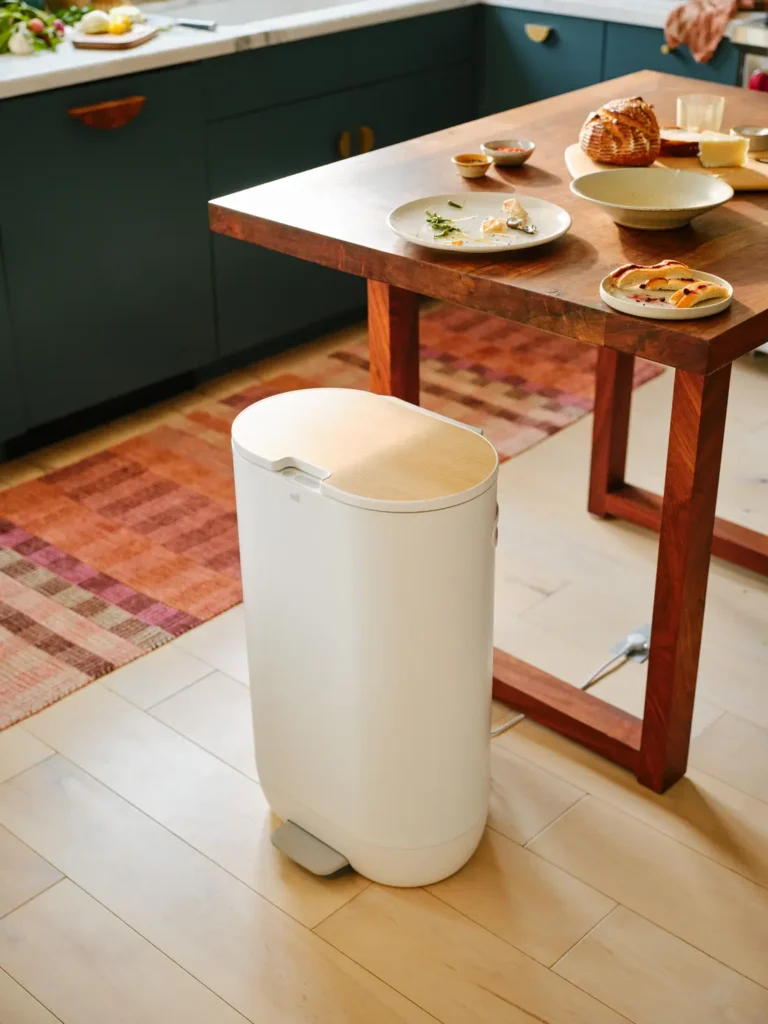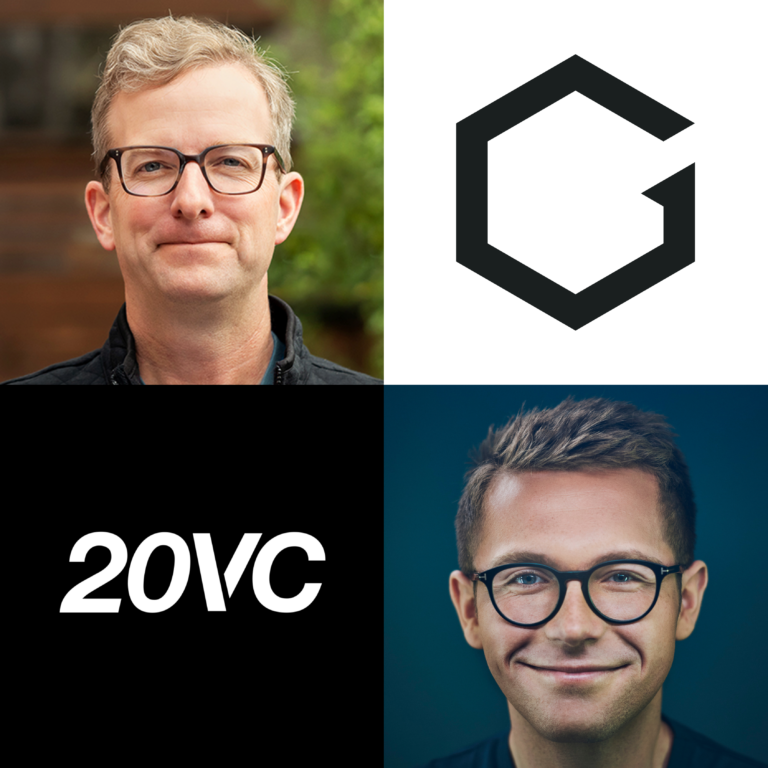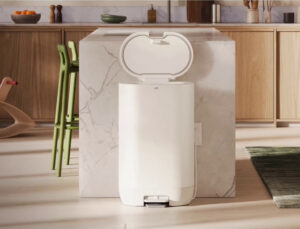
Profiles
Changing Food Waste Habits, One Kitchen at a Time
Food waste is a hidden climate culprit, driving a staggering 10% of global emissions due to methane—a greenhouse gas 80 times more warming than CO2. While the problem often starts with overbuying, the kitchen is a prime place for intervention. Mill, founded by Matt Rogers and Harry Tannenbaum, has developed a high-tech bin and a novel waste handling system that makes recycling food scraps easier and more fun than tossing them in the trash.
Jul 12
Mill’s High-Tech Solution to a Stinky Problem
The mundane act of throwing away moldy bread has a shockingly significant impact. Food waste accounts for about 10% of global emissions. If food waste were a country, it would be the third-largest emitter after China and the U.S. In the U.S. alone, 24% of landfill content is food, with 43% coming from homes.
“We waste a third of the food grown,” says Matt Rogers, CEO and co-founder of Mill. “That’s like buying five bags of groceries and leaving two in the parking lot.” It’s not just a waste of food and money; it’s an environmental disaster. Why? When food ends up in landfills, it breaks down and emits methane. Methane traps 80 times more heat than CO2 over 20 years. In other words, your leftovers are accelerating climate change, and it stinks.
Harry Tannenbaum, co-founder of Mill, explains in a recent interview, ‘Nobody wakes up and says “I’m excited to waste food today,” but urban areas especially face what the industry calls the “ick factor.”‘ Harry notes that only 10% of the U.S. can access composting services. Meanwhile, the risk of attracting fruit flies and other pests discourages many households from composting.
The average American tosses about a pound of food waste daily. Given that existing options aren’t working, we need an alternative that people will actually use.

A Magical Bin That Works While You Sleep
Enter Mill. Their system makes dealing with food waste easy and fun. It brings the circular economy to your door. Here’s how it works:
- Toss your food scraps into a sleek, high-tech bin.
- Overnight, it transforms them into compact, dry, odorless grounds resembling coffee grounds.
- Use the grounds in your garden, add them to the compost, or send them back to farms.
- With 99.5% of U.S. households reachable by the Postal Service, Mill envisions making composting feasible and accessible for everyone.
Don’t let the bin’s simple appearance fool you. It packs serious innovation. The secret sauce? Dehydration. Water and microbes cause rotting food to grow. Drying it out eliminates the stink. The bin features an epic charcoal filter. Its surface area equals Central Park, folded origami-style. It pairs with the ‘best coconut filter on the planet’ to capture volatile compounds.
Mill also created innovative, all-recyclable packaging. It withstands 300 Gs of force. That’s like surviving a rocket launch or a fall from a delivery truck.
Changing Behavior, One Kitchen at a Time
Mill borrows from Nest’s playbook on changing consumer behavior. Matt and Harry learned there how visible home energy data could change habits. The bin weighs incoming food waste, and the app tallies how much waste a household diverts from landfills. You even get a monthly report with gentle nudges that compare your food waste stats to others. It’s like having a polite, non-judgmental friend who wants to help you do better.
This data-driven approach helps users improve their habits and contributes to a broader understanding of household food waste patterns. This data helps researchers, food waste advocates, and government leaders. They can now better measure and influence food waste behavior in the home, which has long been a black box.
In their first year, Mill diverted over 2 million pounds of food from landfills, avoiding significant potential methane emissions. But the impact extends beyond waste diversion. Mill shares that its users reduced their food waste by 20% in their first four months. One-third changed their cooking and shopping habits. Remarkably, 73% of Mill users now put no food in the trash, up from only 8% before.

Instigating System-Wide Change
What excites us about Mill is its ambition to rethink centralized waste management—a $300 billion+ industry in the U.S. alone. Why settle for noisy trucks for waste collection rolling through neighborhoods at wee hours? What if waste be miniaturized and transported more efficiently? It could mean fewer diesel trucks on the road, less emissions, and less disturbed zzzs.
Mill is currently piloting programs with businesses and cities to change how food waste moves through the system. A year-long pilot in Tacoma, Washington showed promising results. Over half of these participants had never used the city’s food scrap collection before. Yet during the pilot they separated ten times more food scraps than average households. Beyond the climate impact, Mill estimates Tacoma residents could save money with smaller garbage carts and lower fees.
Ultimately, Mill demonstrates how systems change often starts small, with pragmatic steps taken to prove the value before widespread adoption. This approach isn’t new to Mill’s founders. Matt and Harry perfected the playbook at Nest. They showed how starting with consumers can quickly establish a business model and prove a product. At Mill, this grassroots approach helps gather data, build customer loyalty, and will enable them to expand to businesses, cities, and beyond.
Featured Posts

Insights
Lessons on Scaling Hardware with Matt Rogers and Mike Schroepfer
Apr 25

Insights
Schrep on the $10T Climate Tech Opportunity and Why the Best Leaders are Like Orchestra Conductors with Harry Stebbings
May 29

News
Mill’s Redesigned Food Waste Bin Really is Faster and Quieter Than Beforecall_made
May 31